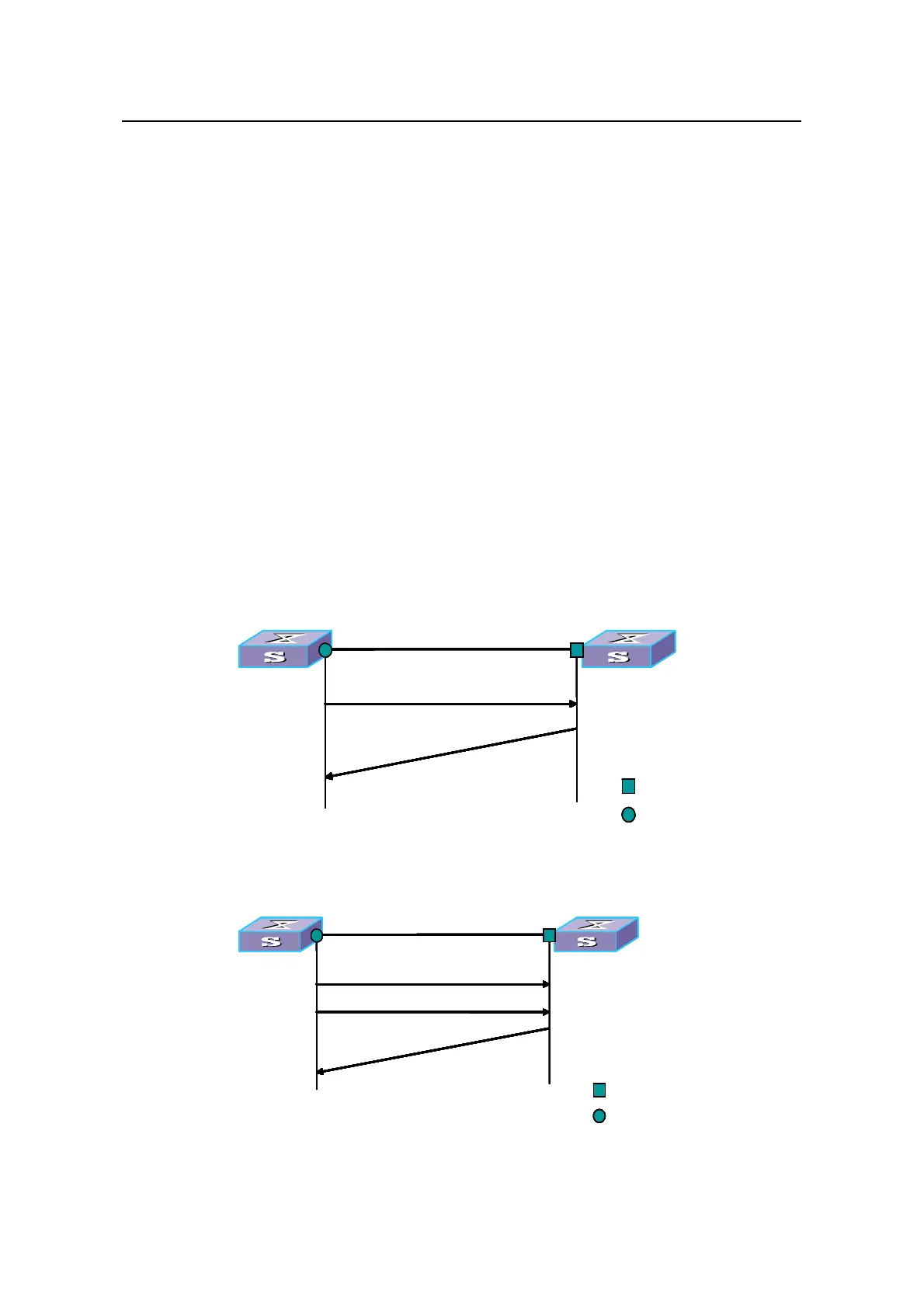Operation Manual – MSTP
H3C S3600 Series Ethernet Switches-Release 1510 Chapter 1
MSTP Configuration
1-40
1.7 Configuring Rapid Transition
1.7.1 Introduction
Designated ports of RSTP-enabled or MSTP-enabled switches use the following two
types of packets to implement rapid transition:
z Proposal packets: Packets sent by designated ports to request rapid transition
z Agreement packets: Packets used to acknowledge rapid transition requests
Both RSTP and MSTP specify that the upstream switch can perform rapid transition
operation on the designated port only when the port receives an agreement packet
from the downstream switch. The difference between RSTP and MSTP are:
z For MSTP, the upstream switch sends agreement packets to the downstream
switch; and the downstream switch sends agreement packets to the upstream
switch only after it receives agreement packets from the upstream switch.
z For RSTP, the upstream switch does not send agreement packets to the
downstream switch.
Figure 1-3 and Figure 1-4 illustrate the rapid transition mechanisms on designated
ports in RSTP and MSTP.
Designated port
Root port
Upstream sw itch Dow nstream switch
Sends proposal packets to
request rapid transition
Sends agreement packets
Root port blocks other
non-
changes to Forw arding
state, and sends
agreement packets
to the upstream switch
Designated port
changes to
Forw arding state
-edge ports
Designated port
Root port
Upstream sw itch Dow nstream switch
Sends proposal packets to
request rapid transition
Sends agreement packets
Root port blocks other
non-
changes to Forw arding
state, and sends
agreement packets
to the upstream switch
Designated port
changes to
Forw arding state
-edge ports,
Designated port
Root port
Upstream sw itch Dow nstream switch
Sends proposal packets to
request rapid transition
Sends agreement packets
Root port blocks other
non-
changes to Forw arding
state, and sends
agreement packets
to the upstream switch
Designated port
changes to
Forw arding state
-edge ports
Designated port
Root port
Upstream sw itch Dow nstream switch
Sends proposal packets to
request rapid transition
Sends agreement packets
Root port blocks other
non-
changes to Forw arding
state, and sends
agreement packets
to the upstream switch
Designated port
changes to
Forw arding state
-edge ports,
Figure 1-3 The RSTP rapid transition mechanism
Designated port
Root port
Upstream switch Downstream switch
Send proposal packets
to request rapid transition
Send agreement packets
Root port changes to
Forwarding state and
sends agreement packets
to upstream switchDesignated port
Forwarding state
Send agreement packets
Root port blocks
other non-edge ports
-
Designated port
Root port
Upstream switch Downstream switch
Send proposal packets
to request rapid transition
Send agreement packets
Root port changes to
Forwarding state and
sends agreement packets
to upstream switchDesignated port
changes to
Forwarding state
Send agreement packets
Root port blocks
other non-edge ports
-
Designated port
Root port
Upstream switch Downstream switch
Send proposal packets
to request rapid transition
Send agreement packets
Root port changes to
Forwarding state and
sends agreement packets
to upstream switchDesignated port
Forwarding state
Send agreement packets
Root port blocks
other non-edge ports
-
Designated port
Root port
Upstream switch Downstream switch
Send proposal packets
to request rapid transition
Send agreement packets
Root port changes to
Forwarding state and
sends agreement packets
to upstream switchDesignated port
changes to
Forwarding state
Send agreement packets
Root port blocks
other non-edge ports
-
Figure 1-4 The MSTP rapid transition mechanism

